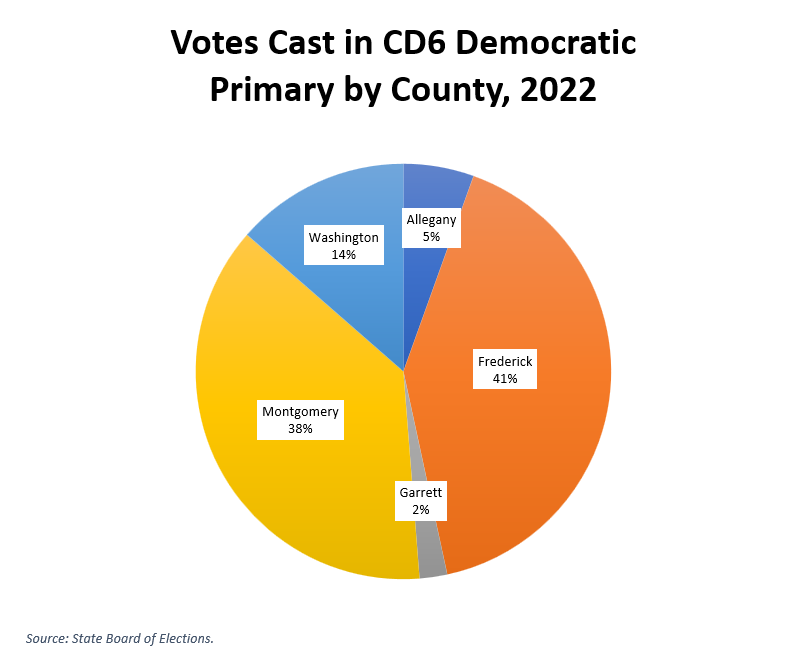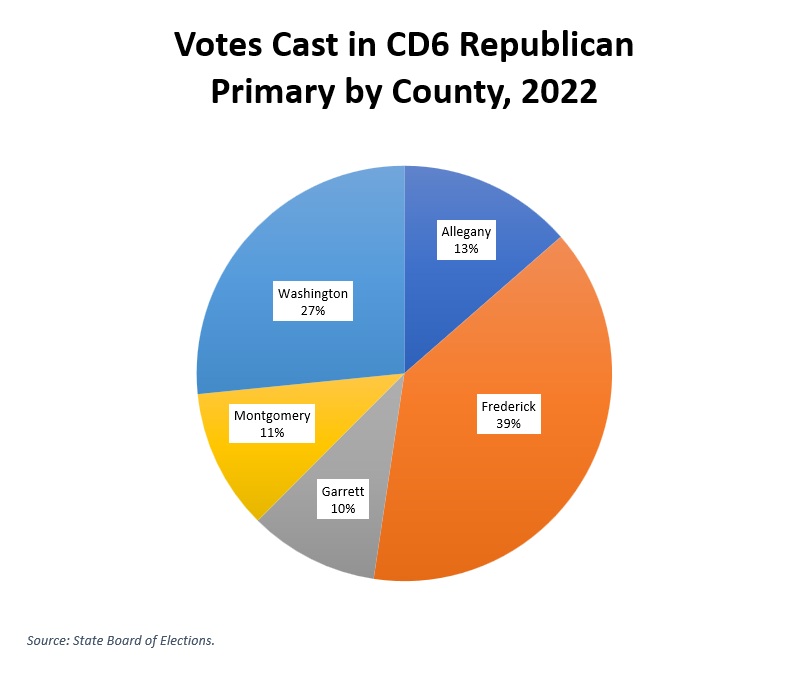By Adam Pagnucco.
When I look at the campaign to succeed Congressman David Trone in Maryland’s District 6, two words come to mind: WIDE OPEN. The race has no front runner, at least right now. No candidate has impressed on fundraising… yet. The field is probably incomplete. And because the district is competitive between the parties, the general election will matter. It could even draw national interest because of the tight margin in the U.S. House (currently +10 in favor of the GOP).
Let’s start by looking at the most important people in the race. No politicians, that’s not you – it’s the voters. The pie charts below show the distribution of votes by county in both the Democratic and Republican primaries in 2022.


On the Democratic side, the current glut of candidates from Montgomery County creates a huge opening for anyone who is strong in Frederick County, which edges out MoCo in primary voters. When I look at this, I don’t understand why former Frederick County Executive Jan Gardner is not in this race. (Maybe she has too much sense to want to be in Congress!) On the Republican side, tiny Garrett County has almost as many GOP primary voters as MoCo. Their distribution of votes is heavily geared towards producing a nominee from Western Maryland.
The fact that there are so many candidates in this race – with perhaps more to come – means that the primary winner on the Democratic side could be taking less than 30% of the vote. That may also be true on the Republican side if more of them get in the race. And so if I were working for any of these candidates (and I’m not), I would be focusing on 1) understanding my base and 2) figuring out how to reach my base. This would involve a mix of polling, biography, geography and targeting.
Here are a few examples of potential starting base, at least in the absence of internal campaign data.
Tekesha Martinez – Black Democrats, Western Maryland counties
Lesley Lopez – District 39, moms with kids at home
Joel Rubin – White, affluent, Jewish, Potomac, Obama donors, national security voters
Laurie-Anne Sayles – Black Democrats, Gaithersburg (where she was a council member), Upcounty MoCo (where she did well in 2022)
Joel Vogel – District 17, Jewish, young, LGBTQ, Latino (Vogel was born in Uruguay)
The first challenge is to count these people. That can come from precinct data and MDVAN, a proprietary resource with which most competent consultants and mail houses have experience that contains some demographic data. Email lists for purchase contain much more demographic data. (I have had fun with these lists in the past!) The next challenge is to build lists of these base voters, again from a combination of MDVAN, the voter file and email data. The third challenge is to figure out what to tell them. That involves polling, constituent feedback (for those who hold office) and information from the ground. Precinct organizations, which every candidate should be assembling, can help with this.
And so once I have identified my 30% (and maybe up to 40% depending on my resources), I would do everything in my power to consolidate them and turn them out. Forget about a vanilla strategy of mailing to all super voters. Other candidates are going to be doing that (like the U.S. Senate candidates) and you’re not going to cut through the noise that way. Go get YOUR folks, the ones who dig what you have to say, the ones who look like you and think like you, and turn them out.
Whoever does that best is going to win.
